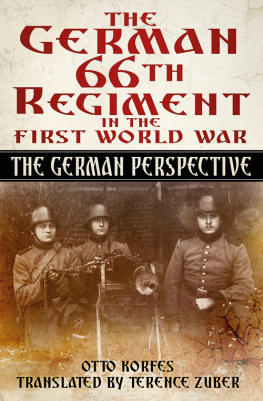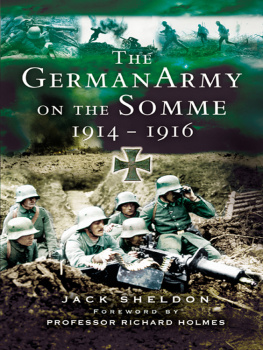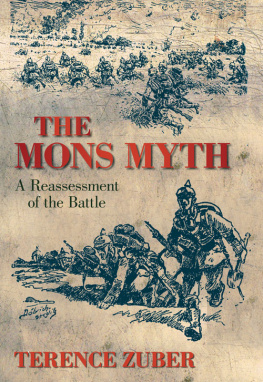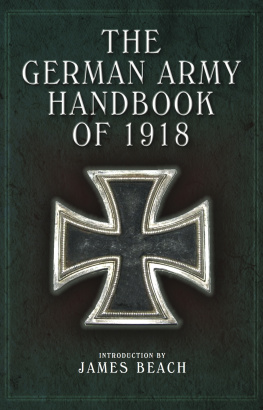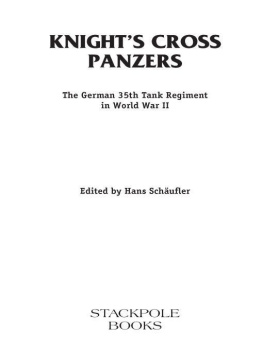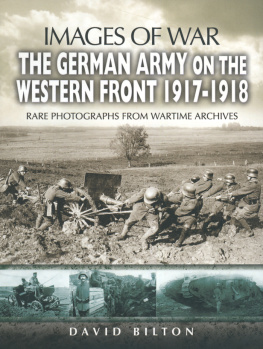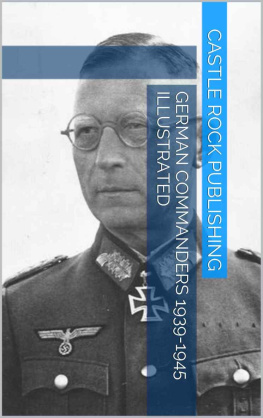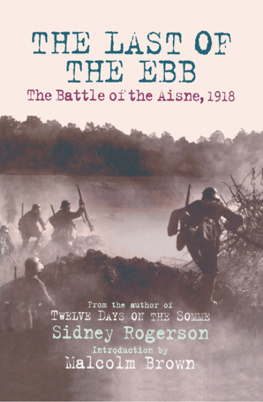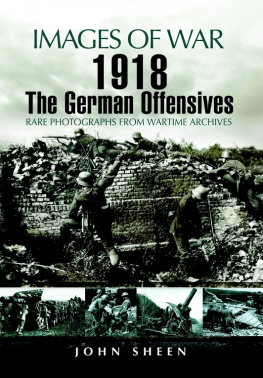

C ONTENTS
The basic tactical unit was the infantry company. The wartime strength of a German infantry company in 1914 was five officers and 260 NCOs and enlisted men. The company commander was usually a captain who was responsible for individual, NCO, and squad and platoon training, particularly individual marksmanship and small-unit fire tactics. The company was broken down into a small company command group and three platoons of about eighty men (in practice, sixty-four to seventy-two men), each platoon consisting of eight squads, each squad led by a sergeant or corporal.
The German non-commissioned officer corps was a particular strength of the German Army. Each peacetime German infantry battalion had between seventy-two and seventy-eight career NCOs, while a war-strength battalion had eighty-five NCOs (including four medical NCOs). These were men who had re-enlisted expressly to become non-commissioned officers. They were carefully selected and provided with excellent training by the company commander and army schools. Training of the individual soldier was in their hands. The company first sergeant, the mother of the company, held his position for a considerable period and enjoyed immense prestige and responsibility.
The company also included the combat trains, which consisted of the ammunition wagon and the mobile field kitchen, and the field trains, which included a company supply wagon and a rations wagon.
The German infantry battalion consisted of four infantry companies and the battalion headquarters: twenty-six officers and 1,054 NCOs and enlisted men. The battalion commander was usually a major, perhaps a lieutenant-colonel. He was assisted by the battalion adjutant, the most capable lieutenant in the battalion, who was the operations officer, and by a rations officer, in combat usually a reserve lieutenant, as well as a surgeon and a paymaster, who was also the NCO in charge of property. Each battalion had eight bicycle messengers, armed with carbines. The company trains were united under battalion control to form the battalion combat trains (four ammunition wagons, four mobile field kitchens, plus the battalion medical wagon) and the battalion field trains (battalion staff wagon, four company supply wagons, four rations wagons, one sundries tobacco and similar personal use items wagon, one battalion supply wagon), altogether nineteen vehicles, thirty-eight horses and forty-seven men. On the march and in combat, the battalion combat trains stayed close to the battalion, but the field trains could be as far as a days march behind.
The German infantry regiment was composed of three battalions and a machine-gun company: eighty-six officers, 3,304 NCOs and enlisted men, seventy-two vehicles and 233 horses. The regiment was the most important unit in the German army. The regimental commander was responsible for selecting and training the officer corps. The annual recruit, company and battalion inspections and range-firing exercises took place in his presence and largely under his control. Unit pride was directed principally towards the regiment and its history. The regimental commander was a lieutenant-colonel or colonel. The regimental staff consisted of three lieutenants: the adjutant (operations officer), an assistant operations officer and the leader of the field trains (which united all the battalion field trains), as well as the regimental surgeon. The regiment also had a large four-horse wagon with engineering tools: 1,200 small shovels, 275 large shovels, 288 pickaxes, 107 picks, sixty-six axes, thirty saws and ninety-six wire cutters. The regimental trains included seventy-two wagons, 165 EM and 210 horses. In theory, the field trains would catch up with the regiment when it billeted or bivouacked, but that rarely happened in mobile operations.
German regiments (with the exception of the Prussian Guard and the Bavarian Army) had two designations. The first was often geographical, in this case, 3rd Magdeburg. The second was its number in the Prussian Army, in this case 66th Infantry. Battalions were numbered with Roman numerals I , II , III , and referred to as I / IR 66 (1st Battalion, Infantry Regiment 66). Companies were numbered consecutively within the battalions: the 1st, 2nd, 3rd and 4th companies always belonged to the I Battalion, 5th, 6th, 7th and 8th the II Battalion, 9th, 10th, 11th and 12th the III battalion. The 3rd Company, 1st Battalion, Infantry Regiment 66 was abbreviated 3/ I / IR 66 or just 3/ 66. The same system applied to cavalry, artillery and engineers.
It was not possible to go beyond translating the regimental history and annotate or explain the background in German history, or the developments in German army doctrine, organisation or weaponry, which would have constituted a major work in itself.
Terence Zuber
After the Great War, practically every combat-arms regiment in the German army, including reserve, and sometimes even combat replacement (Ersatz) units, produced a regimental history. Since the Reichsarchiv in Potsdam was destroyed, and the operational records of the Saxon archive lost (not in the bombing of Dresden, but apparently destroyed by the East German Communists), these regimental histories are the only records we have for the Prussian and Saxon armies, though the complete Bavarian archive exists, as do the Baden and Wrttemberg archives up to division level.
As a group, these are the best regimental histories ever written; indeed they are military histories of the first rank. They should be considered primary documents. They were generally based on the extensive unit records available: war diaries, after-action reports and the mass of administrative documents generated by trench warfare. I was able to see the storage area of the Bavarian army archive, and the quantity of Great War documents is astounding. The regimental histories were written by unit commanders up to the regimental level, adjutants (operations officers) and other leaders of the unit, sometimes working in conjunction. Some were professional soldiers, some reserve officers, which meant that in civilian life they belonged to the educated upper-middle class: university professors, lawyers, businessmen. We therefore get direct insight into what the leaders were doing and thinking. Moreover, these men had trained in evaluating military operations in peacetime: an after-action report would be written for each tactical training exercise and then reviewed and commented on in detail by the next two higher echelons of command. These books were written principally for the members of the unit and their families, so they were generally accurate. They also demonstrate the high level of tactical doctrinal sophistication in the German Army.
Quite a few regimental histories are among the best descriptions of tactical combat anywhere at any time, for example Das 1. Badische Leib-Grenadier Regiement Nr. 109 im Weltkrieg 1914 1918 (The Baden 1st Household Grenadier Regiment Number 109 in the Great War 19141918, Karlsruhe 1927). It is 1,225 pages long, 705 pages describing the regiments tactical operations, all on the Western Front. There are multiple authors. The maps are outstanding and there are lots of them. The rest of the book considers individual aspects in the development of tactical combat: doctrine, weapons, defensive positions, communications, gas, troop quarters, rations, combat and field trains, administration, medicine, chaplains, troop welfare and the replacement battalion. The breadth and attention to detail are unparalleled. If there is a shortcoming, it is that there are no first-person accounts. There is also little possibility of an English translation of such a huge work ever being published.
Next page
